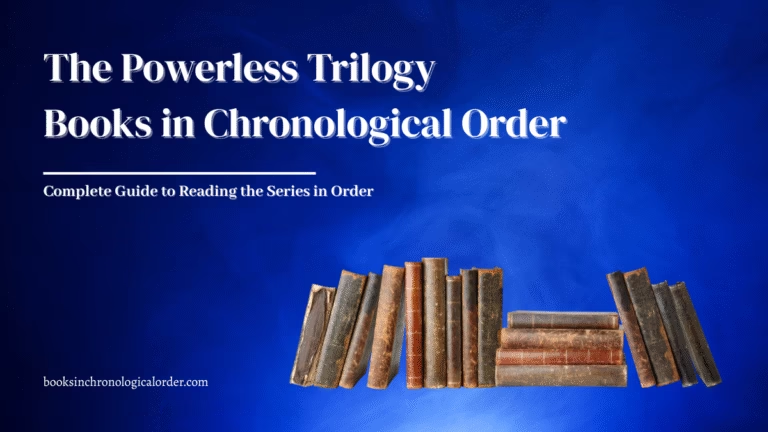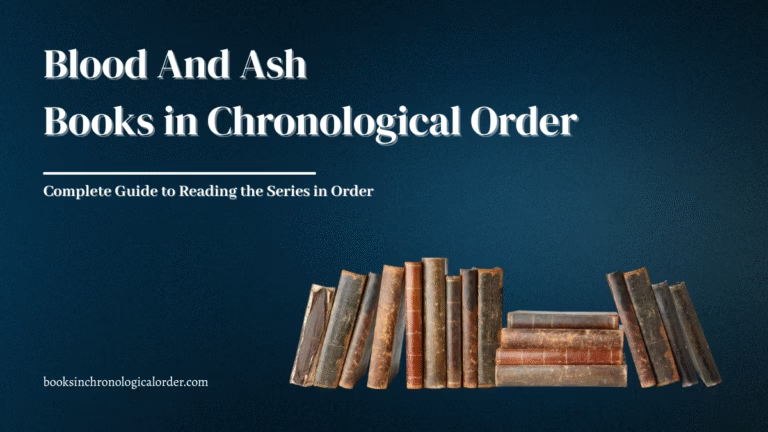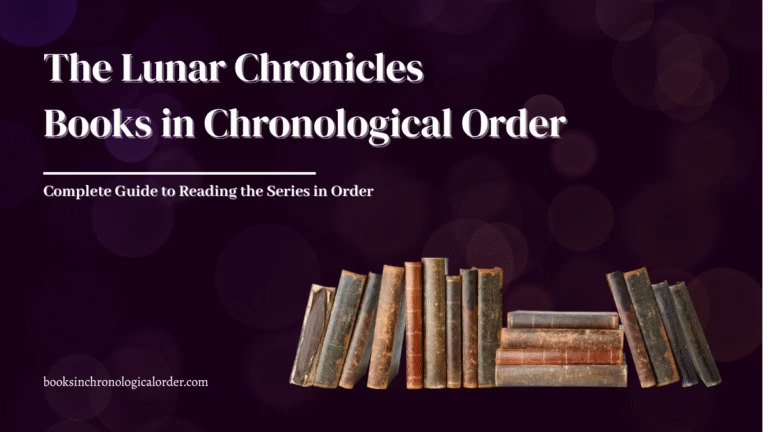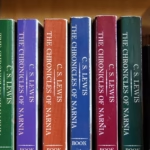Read every series in the right order
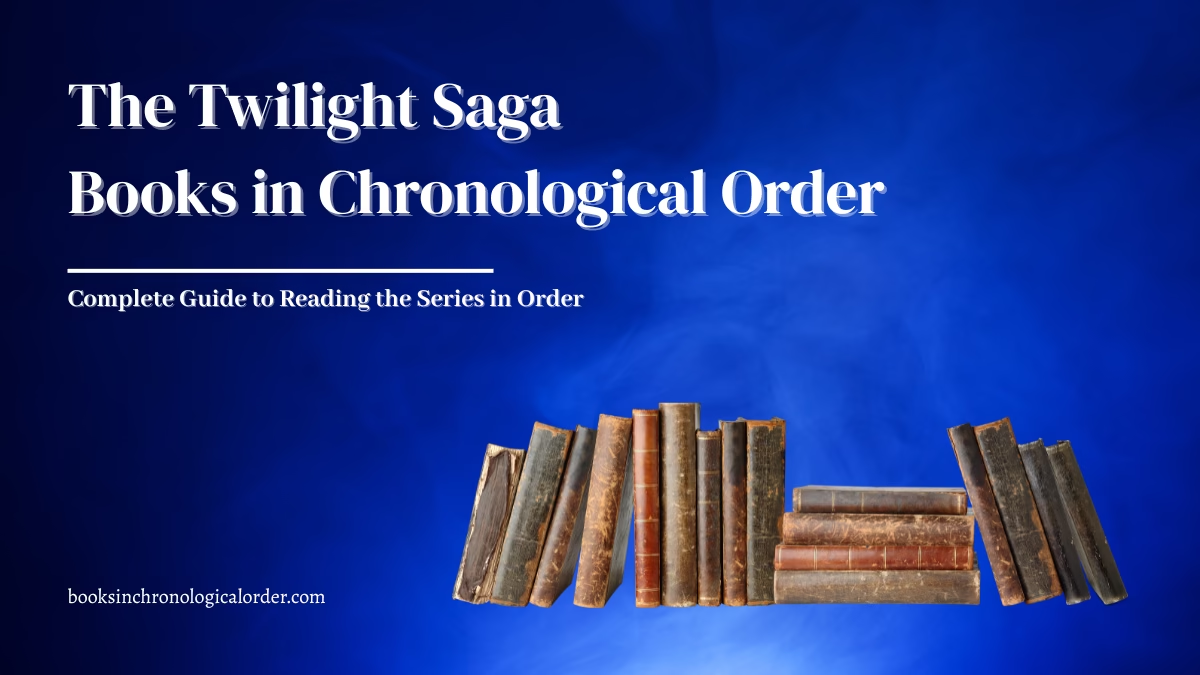
The Twilight Saga Books in Chronological Order – Complete Reading Guide
Table of Contents
Quick Answer (TL;DR)
Read publication order, which is also the chronological sequence for the core narrative:
- Twilight
- New Moon
- Eclipse
- Breaking Dawn
- Midnight Sun (companion retelling of Book 1 from Edward’s POV; read after the quartet for best effect).
If you’re doing a fuller run including extras, slot The Short Second Life of Bree Tanner (novella) after Eclipse and dip into Life and Death: Twilight Reimagined anytime as an alternate-universe standalone.
Introduction
What keeps readers returning to Forks, Washington? It’s not just glittering skin and prom-night peril. It’s the fantasy of belonging—of finding a family, a future, and a fierce kind of love that redefines “forever.” Stephenie Meyer’s Twilight Saga threads classic Gothic romance through Pacific Northwest drizzle and modern high-school drama, then scales up to treaties, ancient law, and global stakes. Whether you’re revisiting your teenage TBR or building a classroom/library collection, our guide to The Twilight Saga Books in Chronological Order lays out the clearest path, explains where the companion titles fit, and shows which editions and adaptations best suit different readers.
Quick Facts
| Field | Details |
|---|---|
| Series | The Twilight Saga by Stephenie Meyer (4 main novels + 1 companion POV; related extras) |
| Ideal Age Range | YA & up (13+; some scenes in Breaking Dawn suit 14–15+ with guidance) |
| Primary Genres | Paranormal romance, urban fantasy, YA coming-of-age |
| Reading Difficulty | Easy–Moderate (accessible prose; high emotional stakes) |
| Estimated Total Pages | ~2,400–2,700 across the four main novels (editions vary) |
| Estimated Read Time | ~32–40 hours total (8–10 hrs/book at average pace) |
| Content Warnings | Stalking/control dynamics, blood/injury; intimate scenes (fade-to-black); intense childbirth in Breaking Dawn; violence against vampires/werewolves |
| Media Adaptations | Five feature films (2008–2012); multiple official soundtracks; graphic novel adaptations of Twilight |
| Setting | Forks & La Push, Washington; Volterra, Italy; Alaska & the wider vampire world |
| Signature Themes | Choice vs. destiny, found family, immortality’s ethics, self-control, cross-cultural agreements (Cullens/Quileute pack) |
About The Twilight Saga Book Series
At its core, the saga is a Gothic romance that steadily widens: Book 1 is intimate (girl meets vampire), Book 2 leans melancholic and mythic (absence, werewolf friendship), Book 3 escalates to rivalries and revenge, and Book 4 delivers the consequences of impossible love—marriage, motherhood, and a standoff with the Volturi, the authoritarian rulers of vampire-kind. The Cullens’ “vegetarian” code (no human blood) shapes every choice, while the Quileute shapeshifters add treaty law and community identity to the moral map. Read straight through for maximum momentum; then explore the alternate angles.
The Twilight Saga Books at a Glance
Links for convenience; formats/prices change. Choose your region (US/UK) for consistent cover designs.
| # | Title | Amazon Buy Link |
|---|---|---|
| 1 | Twilight | Buy On Amazon |
| 2 | New Moon | Buy On Amazon |
| 3 | Eclipse | Buy On Amazon |
| 4 | Breaking Dawn | Buy On Amazon |
| 5 | Midnight Sun (Edward’s POV of Book 1) | Buy On Amazon |
The Twilight Saga Books in Chronological Order
For a first experience, keep Midnight Sun as a bonus “behind-the-eyes” fifth read. Its timeline overlaps Book 1, but its revelations best land after you know Bella’s arc.
1) Twilight
A new girl in a rainy town meets a beautiful boy with a century of self-control and secrets. The book’s magic is its slow burn: the cafeteria stare, the biology lab current, the infamous “I like watching you sleep” confession that reads like Gothic courtship in a modern bedroom. Forks itself feels sentient—mist, moss, and a kind of hush that sharpens every heartbeat. The climax fuses romance to danger and introduces vampire politics without overwhelming the love story.
Why start here: It’s the “first imprint” of the world’s rules: the Cullens’ covenant, the Volturi’s shadow, and Bella’s core choice—what does “forever” cost, and who gets to decide?
2) New Moon
Absence becomes its own character. When a protective decision shatters the couple, the novel sinks into elegiac grief—then unfurls a different kind of love with Jacob Black, a friend with warmth, humor, and a heritage that shapes him into something more. The werewolf (shapeshifter) mythos and the Quileute pack dynamics take center stage, while ancient vampire law steps from rumor into threat.
Why it matters in order: You need the ache, the motorcycles, the paper-cut at the party, and that sun-blasted Italy sequence exactly where Meyer places them to understand later loyalties and limits.
3) Eclipse
The triangle is real now. Past sins circle back as new vampires flood Seattle, and the Volturi watch like patient hawks. The heart of Eclipse is negotiation: of borders (treaty lines), of bodies (compromise without coercion), and of futures. Bella’s agency sharpens; Edward’s rigidity learns to breathe; Jacob’s impulsiveness gains complexity. Love doesn’t erase difference—it navigates it.
Why it matters in order: The tent scene; the battle training; the proposal; the gut-punch choices. The novella Bree Tanner (see Companion Works) clicks here for added texture.
4) Breaking Dawn
All the foreshadowing cashes out: vows, voyages, and a pregnancy that breaks biology and the fandom in equal measure. Part II pivots to Jacob’s POV for a bracing tonal shift, then returns to a Bella reborn—not merely transformed, but integrated: human empathy plus immortal power, finally aligned. The Volturi showdown is more chess than brawl, a demonstration that knowledge and alliances can be deadlier than teeth.
Why it matters in order: Every conversation about consent, destiny, and identity culminates here. The family you met in a cafeteria becomes an army of witnesses—an affirmation of chosen kin.
5) Midnight Sun (Edward’s POV of Book 1)
This is Twilight with X-ray vision. Edward’s mind-reading reframes cafeteria scenes into crowded chorus, reveals Cullen family council politics, and turns every brush of Bella’s wrist into a hazard analysis. The car-park rescue and meadow feel new—less swoon, more high-wire. Edward is not simply romantic; he’s an addict managing proximity to his trigger. You grasp at last how discipline, not destiny, is the Cullens’ defining trait.
Why last: It enriches without replacing Bella’s lens. The suspense works because you already love these beats; the added interiority feels like director’s commentary you earned.
Series Timeline & Character Development
Bella Swan — From self-effacing newcomer to someone who names her desires, negotiates boundaries, and chooses a future deliberately. Her transformation in Breaking Dawn is less about fangs than about clarity: she stops apologizing for wanting impossible things, then pays the cost to keep others safe while she has them.
Edward Cullen — A century of restraint given purpose. Midnight Sun reveals a mind that is more than brooding; it’s tactical compassion. His arc bends from paternalism to partnership, learning to trust Bella’s danger calculus as much as his own.
Jacob Black — Not a consolation prize but a counter-proposal: warmth, mortality, community. His temper and humor complicate him; his imprinting shocks the narrative and the readership. By Breaking Dawn, he is proof that love can pivot without vanishing.
The Cullens — Ethics over instinct. Carlisle’s oath, Esme’s sheltering heart, Alice’s joy, Jasper’s scars, Rosalie’s thorned longing, Emmett’s ballast—Breaking Dawn lets each gift surface in the assembly of allies.
The Volturi — Law as theatre. Aro’s charisma weaponizes courtesy; Marcus reads bonds; Caius seethes. They are systemic antagonists where appearances and loopholes matter more than brute force.
The Quileute Pack — Sovereignty, solidarity, and the pain of sudden conscription into a body you didn’t choose. The pack mind is both comfort and loss; the treaty is both shield and shackle.
Novels Sorted in Order of In-Universe Events
The core arc is linear:
- Twilight
- New Moon
- Eclipse (insert Bree Tanner novella here if reading)
- Breaking Dawn
- Midnight Sun (overlaps Book 1 from Edward’s POV; best read fifth).
Novels Sorted in Order of Publication
- Twilight (2005)
- New Moon (2006)
- Eclipse (2007)
- Breaking Dawn (2008)
- The Short Second Life of Bree Tanner (2010, companion novella to Eclipse)
- Life and Death: Twilight Reimagined (2015, AU gender-swap; optional)
- Midnight Sun (2020, Edward’s POV of Book 1)
Companion Works
- The Short Second Life of Bree Tanner (2010) — A novella expanding Eclipse from the viewpoint of a newborn vampire; read right after Eclipse for the most resonance.
- Life and Death: Twilight Reimagined (2015) — An alternate-universe swap (Beau/Edith). Not canon to the main arc but a thoughtful meditation on patterns vs. particulars.
- Twilight: The Graphic Novel (Volumes 1–2) — Faithful visual retelling of Book 1; excellent for visual learners and classroom use.
- Official Illustrated Movie Companions — Behind-the-scenes, costumes, and production designs (great for media-studies tie-ins).
Editions & Formats (hardcover, collector, audio)
Hardcover/Paperback/Mass Market
- Anniversary editions of Twilight often include bonus content or new forewords; collectors may seek matched-spine sets for all four core novels.
- Regional covers vary; pick one region for a uniform shelf aesthetic.
Audiobooks
- The Audible editions are strong for commute reading; performances lean into tone (wistful in New Moon, taut in Eclipse, expansive in Breaking Dawn).
- Midnight Sun on audio especially shines, given Edward’s interior monologue and the “voices in a room” effect of his telepathy.
Graphic & Classroom Use
- Graphic novels of Twilight offer a lower-barrier entry for reluctant readers.
- Pair passages across formats (e.g., Twilight meadow scene in prose vs. panels) to teach adaptation choices.
Collector Tips
- Seek original dust-jackets for first prints; store away from light to preserve deep-black covers.
- Keep an eye out for signed or special book-tour editions.
Why Read The Twilight Saga Books in Chronological Order?
- Emotional Arc Integrity: The quartet escalates from crush to covenant; reshuffling undercuts payoff.
- Worldbuilding Rhythm: Treaty law, Volturi jurisprudence, and shapeshifter lore arrive exactly when you’re ready to absorb them.
- Perspective Bonus: Saving Midnight Sun for last turns familiar beats into revelations rather than spoilers.
In other words, The Twilight Saga Books in Chronological Order keeps the heartbeats (and heartbreaks) in the right places—and magnifies the finale’s sense of earned peace.
Author Spotlight: Stephenie Meyer
Stephenie Meyer’s origin story is legend: a vivid dream in June 2003 about a meadow conversation between a mortal girl and a vampire boy became a late-night writing sprint around raising three young kids, morphing into a manuscript that detonated on release in 2005. Awards, bestseller records, and a pop-culture wave followed (New Moon’s 31 weeks at #1 on the NYT list; Breaking Dawn’s 1.3 million first-day sales). Meyer’s voice—transparent, earnest, emotionally maximal—made YA paranormal feel personal, not just flashy. Outside the saga, she’s written The Host (adult SF romance) and produced for film/TV.
Media Adaptations (films & more)
Feature Films (Summit Entertainment, 2008–2012)
- Twilight (dir. Catherine Hardwicke, 2008)
- The Twilight Saga: New Moon (dir. Chris Weitz, 2009)
- The Twilight Saga: Eclipse (dir. David Slade, 2010)
- The Twilight Saga: Breaking Dawn – Part 1 (dir. Bill Condon, 2011)
- The Twilight Saga: Breaking Dawn – Part 2 (dir. Bill Condon, 2012)
Watch Twilight trailer :
Soundtracks
— A who’s-who of late-2000s alt-rock/indie (Paramore, Muse, Thom Yorke, Florence + The Machine), now deeply nostalgic for the saga’s fan generation.
Where adaptations diverge
- Tonal shifts (Book 2’s depression depicted via time-lapse windows); expanded Volturi visuals; action emphasis in Part 2’s climax vs. the book’s cerebral confrontation. Use as conversation points in classrooms about adaptation choices and audience expectations.
FAQs
Do I have to read Midnight Sun?
No—but it elevates Book 1 after the fact. If you liked Edward more in theory than in text, his POV may become your favorite entry.
Is the series appropriate for middle school?
We recommend 13+. Themes include intense romance, possessiveness, and a visceral childbirth scene in Breaking Dawn. Parents/teachers should provide context and discussion.
What about the control/stalking critiques?
They’re valid conversation starters. Use them to talk about healthy vs. unhealthy boundaries, consent, power differentials, and growth (e.g., Edward learning partnership).
Where does Bree Tanner fit?
Right after Eclipse for maximum pathos during the newborn-army arc.
Can I start with the films?
Sure, but the books deepen character logic and world rules; many readers find the romance more convincing on the page.
Final Thoughts
Whether you’ve loved these books since your first rainy weekend in Forks or you’re exploring them for cultural literacy, the best path is simple: follow The Twilight Saga Books in Chronological Order, save Midnight Sun as a coda, and—if you’re in a completist mood—slot Bree Tanner after Eclipse. Read for the romance; stay for the ethics of self-control, the chosen family’s warmth, and the idea that forever isn’t a curse if you share it well.

